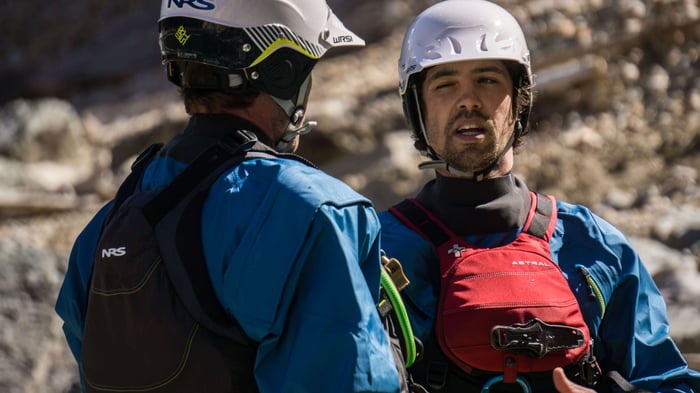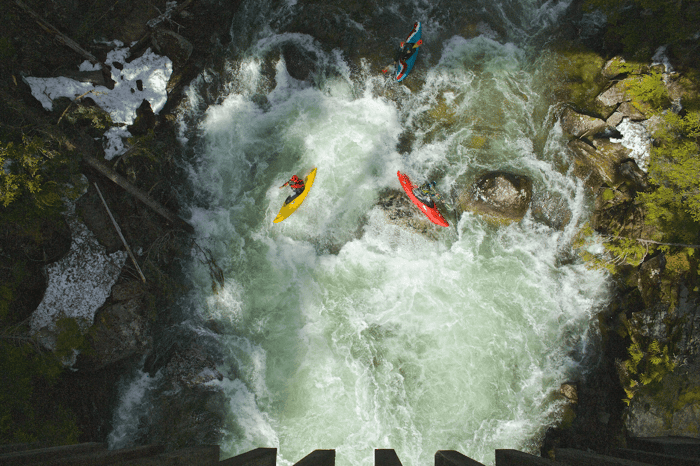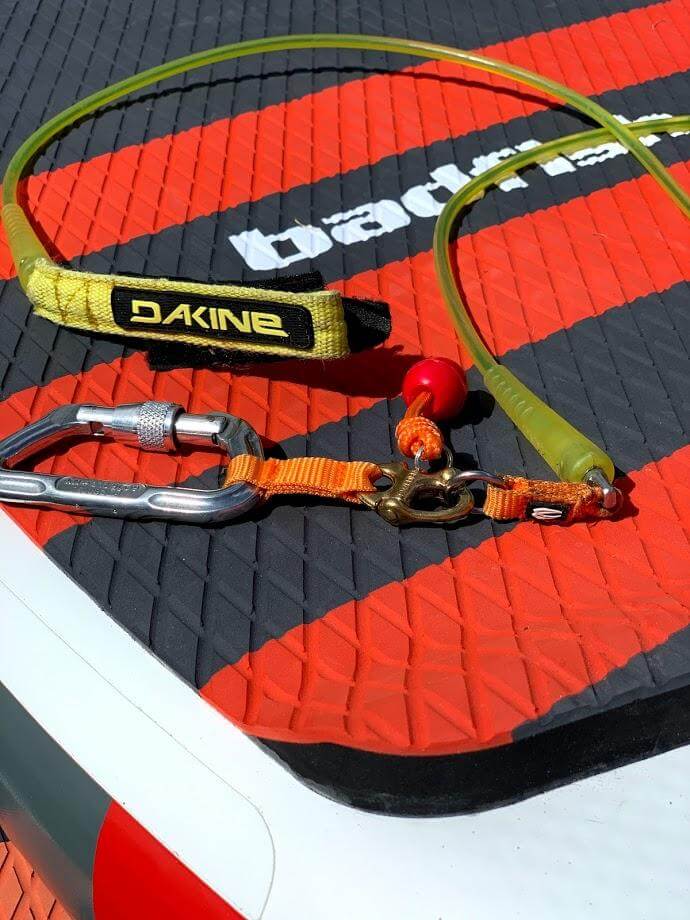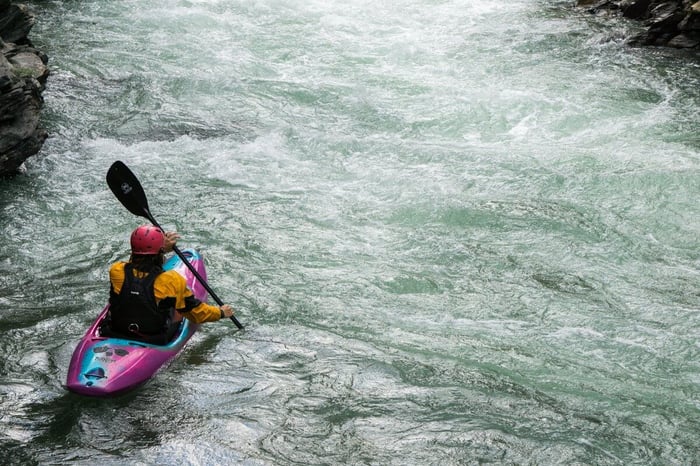Information gathering and getting a GRIP on your nerves.
Words & Images: Gregor Grey
In this article, the Aquabatics team go over how to inspect rapids from the bank and suggest some handy tips for managing anxiety so that kayakers can perform at their best on the water.
From the eddy you look over your shoulder, craning your neck, you cannot see anything beyond the river’s horizon line. The spray mist erupting from the rapid puts a golf ball sized lump in your throat. It is time to get out and scout the rapid.
Inspecting rapids is an essential skill for any whitewater kayaker. Yet often I talk to boaters who say, “looking at rapids always makes me nervous.”
I totally relate, getting in and out of our kayaks makes it harder to stay in the flow of the river journey and looking at intimidating rapids for too long makes anyone’s focus switch to catastrophizing. The decision-making aspect alone of inspecting rapids can be a daunting task.
Therefore, it really helps for us to develop a systematic method for information gathering, when scouting rapids. Using a structure can help to remain task focused and as efficient as possible.
-
Start at the end of the rapid
Always start information gathering at the exit of the rapid and work back upstream. This allows the paddler to understand the broader river context of this particular rapid which often plays a key role in deciding whether the rapid is an appropriate undertaking. Perhaps this rapid ends in a calm pool for the group to easily collect all the pieces after a swim? Or does this rapid cascade into another challenging piece of white water? Start the process of decision making by understanding the wider setting; establishing where you want to be exiting the rapid is the fundamental piece.
-
Interesting Places.
The next step is what Brandon calls “Interesting Places”. This includes recognizing any hazards you want to avoid or parts of the rapid that you do want to get involved with.
Whilst recognizing potentially hazardous aspects of the rapid is important, we must not fixate on the negatives and instead focus on where you do want to be in the rapid. For example, frame this in your mind as, “I want to be left of the center boulder on that lovely green tongue.”
-
The Line.
Understanding the line or path you intend to take is the next step towards paddling the rapid with confidence. We need to connect the dots from the exit point, the appealing interesting places, and the initial entrance.
Try to simplify this as much as possible... Can you verbally describe your line to one of your peers?
Think about Speed, Angle, Key strokes…
-
Set the stage
Be realistic about what you can actually protect against. Having a buddy stand in a semi useful position can give us a false sense of security.
We can refer to this step as “Setting the stage,” does everyone know their roles? Sequence of events? camera?
What's your gut instinct telling you at this point? Do you just not feel comfortable with the line or are you feeling excited by the challenge?
-
Final check of the lip.
The last part before committing to paddling your line is to double check the approach. It helps to get down low and check your chosen reference points from the kayakers perspective.
 Tim checks the entrance from the kayakers perspective. Elbow River
Tim checks the entrance from the kayakers perspective. Elbow River
Now that you're ready to paddle the rapid, using the GRIP anagram can help us keep our nerves just where we want them.
Goal set: set a clear intention in your mind of what you are going to do. Keep this as simple as possible, “I'm going to start right, drive left of the middle boulder, finish in the eddy on the left.”
Relax: I use a little routine to get rid of distractions and relax my mind so that I can focus on just the goal that I have set. I double check my spray skirt, take a few deep breaths then splash water on my face. Other people close their eyes and focus on their breathing. Familiarity can be comforting so find something that works for you and keep it the same every time.
Imagery: Imagining yourself performing well and achieving your set goal can be a very powerful tool. You will see professional athletes and local boaters alike taking time to mentally rehearse a rapid before committing. I visualize a GoPro perspective and what it's going to feel like to get those key strokes perfectly timed.
This is where experience on the water really helps- the larger your metaphorical video library of kayaking experiences is, the more easily you can draw upon similar past experiences and visualize that sweet line. This makes sense to build up slowly over time.
Positive Self Talk: saying something out loud like “You got this Greg” can help to give yourself that little extra bit of confidence. I find the cheesier the phrase the better, sometimes getting students to say out loud, “I AM GOOD AT KAYAKING DAMN IT!” can be a humorous way to up ramp up your psych. The chances are that no-one can hear you anyway….
 Matt, in the green kayak, takes a minute to visualize his line before dropping in. Cataract Creek.
Matt, in the green kayak, takes a minute to visualize his line before dropping in. Cataract Creek.
Ultimately, we should all practice being comfortable in our decisions to either walk around or paddle any particular rapid. Accept that sometimes it’s a braver decision to walk a rapid than to attempt something that just doesn’t feel right on a particular day. If we can embrace the mind game aspect of running rapids this will support our long-term kayaking development massively.
See you on the water.
Greg






















































